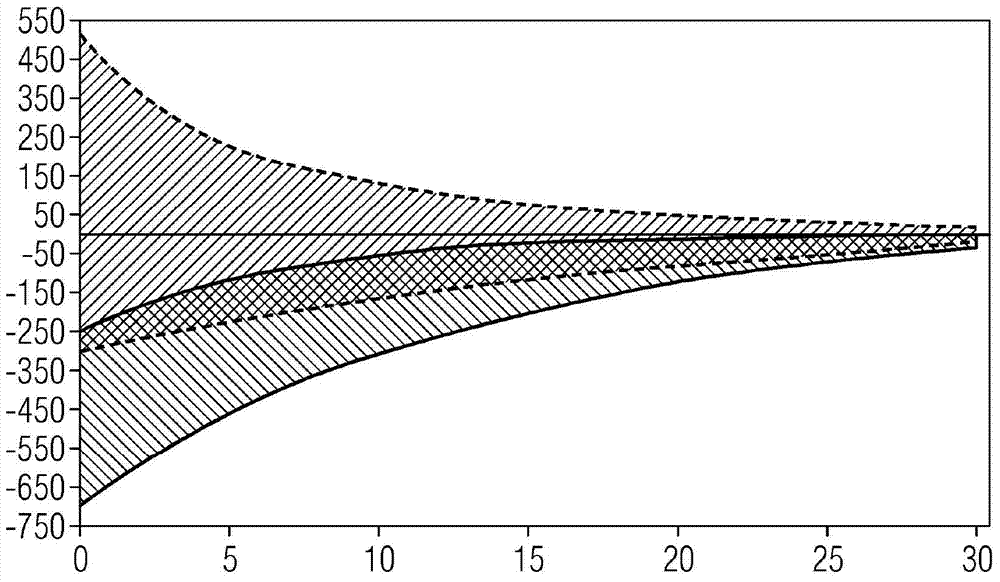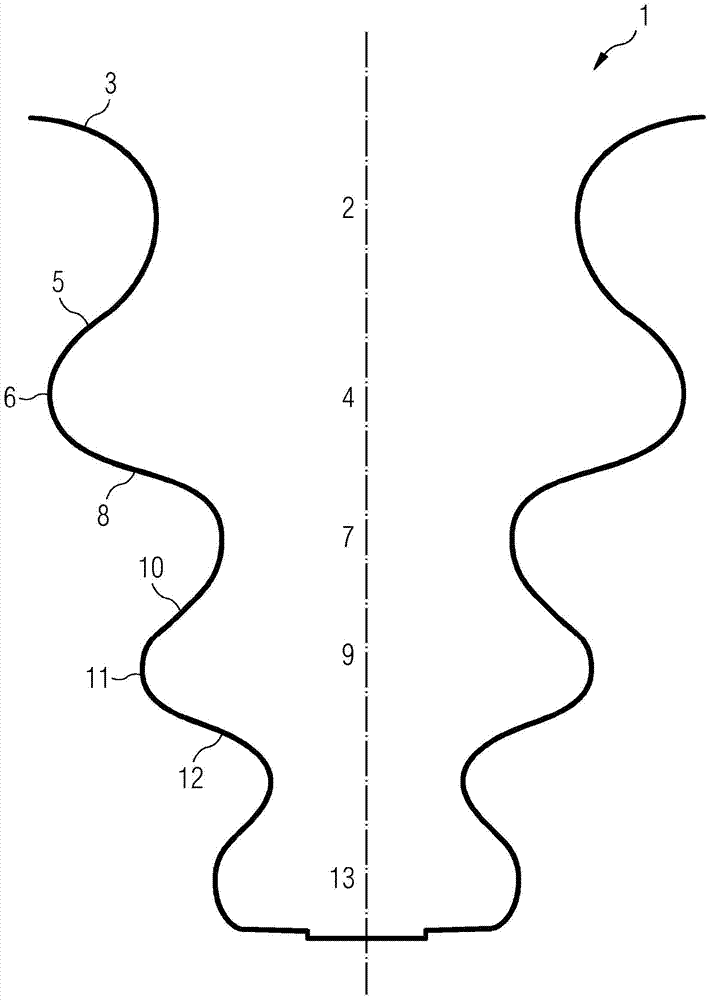Method for machining materials by milling and subsequent brushing
A technology for processing materials and combing brushes, which is applied in the direction of cutting tools for milling machines, metal processing equipment, workpieces, etc., and can solve the problems of increased processing time, reduced cutting and feed speed, etc.
- Summary
- Abstract
- Description
- Claims
- Application Information
AI Technical Summary
Problems solved by technology
Method used
Image
Examples
Embodiment Construction
[0026] exist figure 1 The range of internal stress change before and after brushing is shown in . Plot the depth in microns to the right. Plot the internal stress in MPa upwards. The horizontal line in the middle indicates zero internal stress. That is to say, there is neither internal tensile stress nor internal compressive stress there. In the region above this line there is an internal tensile stress. There are internal compressive stresses in the region below this line.
[0027] The hatched area on the right, ie the area between the two dotted lines, indicates in which range the internal stresses of the material milled at a high cutting speed before the brushing lie. It can be recognized here that in many cases undesired internal tensile stresses are present. Of course, there are also cases where internal compressive stress is generated. The hatched area on the left, ie the area between the two solid lines, indicates the value of the internal stress after brushing. ...
PUM
| Property | Measurement | Unit |
|---|---|---|
| diameter | aaaaa | aaaaa |
| length | aaaaa | aaaaa |
Abstract
Description
Claims
Application Information
 Login to View More
Login to View More - R&D
- Intellectual Property
- Life Sciences
- Materials
- Tech Scout
- Unparalleled Data Quality
- Higher Quality Content
- 60% Fewer Hallucinations
Browse by: Latest US Patents, China's latest patents, Technical Efficacy Thesaurus, Application Domain, Technology Topic, Popular Technical Reports.
© 2025 PatSnap. All rights reserved.Legal|Privacy policy|Modern Slavery Act Transparency Statement|Sitemap|About US| Contact US: help@patsnap.com



